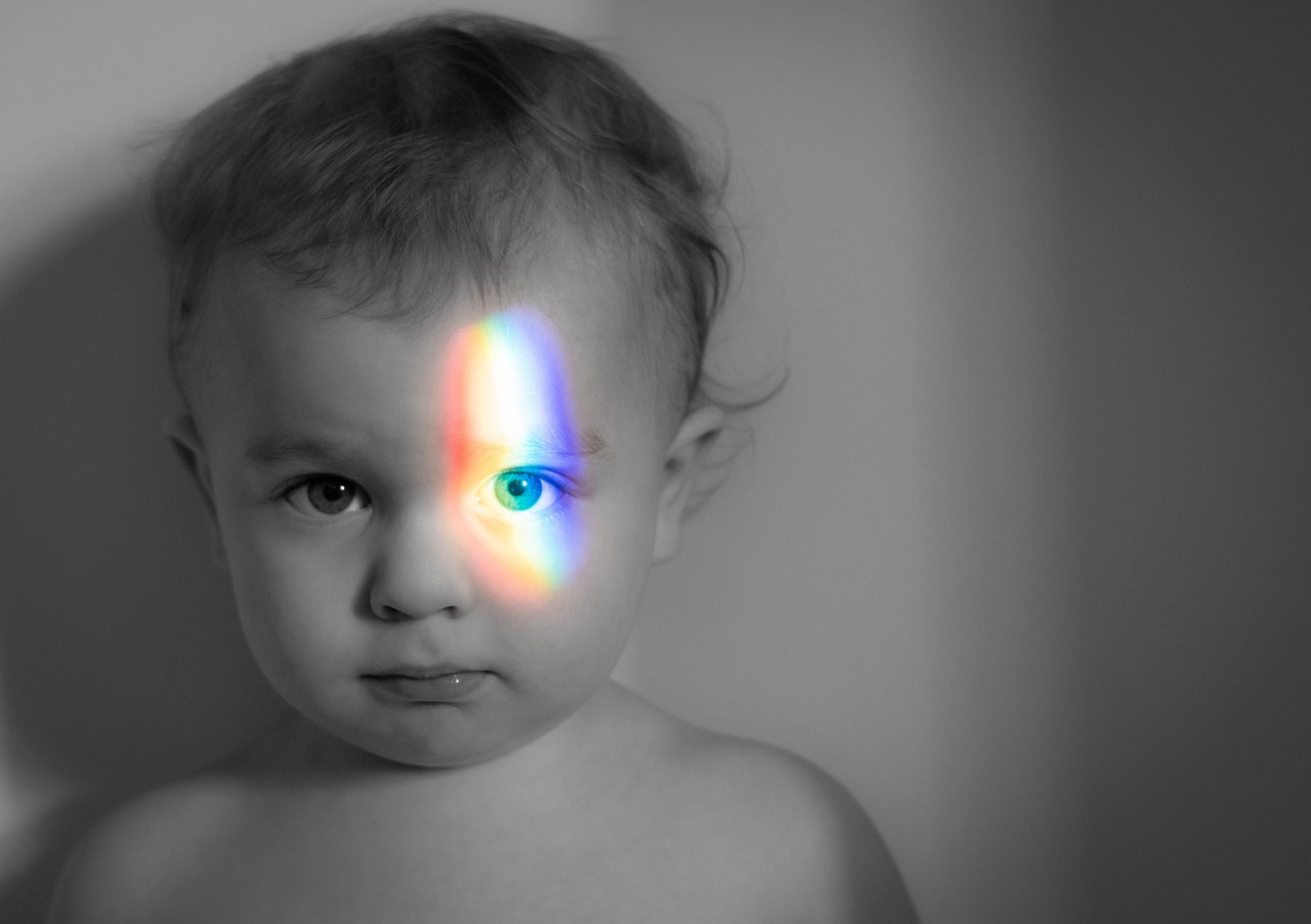
How to Choose Light for Your Kids? Part.1
Now more and more families realize the importance of protecting their baby’s vision. How to let the baby make rational use of light, and how to protect the baby's eye health, have become a matter of great concern to parents.
Natural light is actually the healthiest and most enjoyable light. A room with opulent sunshine and fresh air should be a good choice for kids’ rooms. Windows and curtains should be opened during the day to let sunlight into the room as much as possible and make the room ventilated. But be aware that the light should not directly shine into the baby's eyes. At the same time, when using artificial light, we should strive for a high-quality light source.
Yuji SunWave™ series delivers closest-to-sunlight natural light with 99% similarity, rendering colors as true as under sunlight. It contains violet light, weakens blue light, and enhances red light to help create a healthy environment for the eye.
Now let's take a look at the lighting design of the children's rooms. What do we need to pay attention to?1.Choose the right light fixture
There are many kinds of lamps, which can be divided into basic lighting, atmosphere lighting and functional lighting according to their functions. The lamps suitable for children's rooms should be based on basic lighting, supplemented by atmosphere lighting and functional lighting. Ceiling lamp, table lamp, reading lamp, wall lamp, lamp strip can be used in combination.
-
1.1 Dimmable light is better
Children's eyes are relatively more sensitive, too bright light, or too dim light will damage the development of eyeballs and affect their vision. Therefore, the color temperature and brightness of the lamps in kids’ rooms are very particular.
There has been a doctor who said that too dark a surround can do great damage to the eyes, so the design of the baby’s room should have sufficient light. However, too much light will also affect the health of the baby's eyeballs, and it is also very easy to cause irreversible damage to the eyeballs. The baby's eyes are not yet fully developed, and high-intensity direct light can cause blindness. Therefore, the selected lamps should be adequate but not strong.
It is best to choose a lamp that can adjust the brightness and angle, ensure enough light when reading during the day, and dim the light at night to increase the child's sense of security and help the child fall asleep as soon as possible. After the child falls asleep, be sure to turn off the light. Because children sleep under lights, their eyesight will be impaired, and the rate of myopia is much higher than that of children who sleep in the dark. Moreover, the light will inhibit the secretion of melatonin in the human body or reduce its concentration, causing problems such as insomnia and poor sleep quality, which will adversely affect the growth and development of children.
Light strips with soft light can also be used in the baby’s room. The brightness should be as soft as possible. Do not choose colorful or too bright light belt products. Don't choose colorful tapes in various shapes, as they will cause eye fatigue and blurred vision, which will affect the health of your baby's eyesight.
SunWave™ series is the ideal option wherever eye health is your concern and natural light is needed. At the same time, the dimmable LED bulbs with smooth dimming down to 5% offer you the most flexibility to control the brightness in your place without any flickering. Please check Yuji SunWave™ bulbs below:


The first two years after birth is a critical stage for the development of the baby's eyes and eye focal length adjustment function. When designing the baby room, parents should take it seriously that the lamps at home should be equipped with lampshades as much as possible. The baby should not be allowed to look at the sun when going out. Do not turn on the bathroom heat lamp fixture when bathing the baby. The light from the fixture can seriously damage the baby's eyes.
Children's eyes are in the developing stage and are extremely sensitive to light. If the lighting design of the room is unreasonable, with problems such as strong light, glare, and flicker, it is very likely to have adverse effects on their vision and even their physical and mental health. In response to these problems, Yuji products have carried out technical innovations one by one. The problem of glare and strobe is avoided, so you can use it with confidence.
SunWave™ Family Features

-
1.2 Tunable white light is better
In addition, the color temperature of the children's room is recommended to choose 3000K-4000K, which is soft and comfortable.
Generally speaking, the lighting layout of a children's room should be based on the main light, with ambient and functional lights as auxiliaries. The color temperature of the main light should be controlled within 4000-6000K, which can not only meet the lighting needs of children, but also not too dazzling. Before sleep, the auxiliary lighting should be based on soft lighting, controlled below 3000K. When children are doing homework and reading, both the desk lamp and the main lamp should be on at the same time, which is controlled at about 4000K.

Yuji dim to warm led strip, 1800K-3000K dimmable, adjusting the brightness as well as the color temperature at the same time.
CRI-MAX™ CRI 95+ DIM TO WARM LED FLEXIBLE STRIP 1800K-3000K - HUMAN CENTRIC LIGHTING
Yuji SunWave™ CRI 98 Tunable White LED Flexible Strip 2700K-6500K meet varies lighting scenario of kids, such as learning, playing and falling asleep. For example, before going to bed, the whole room can be darkened in advance to help children gradually adapt to the darkness and reduce inner fear.

In addition to choosing the right lamps, it is also important to use them intelligently. We'll talk more about this in the next article.


Leave a comment